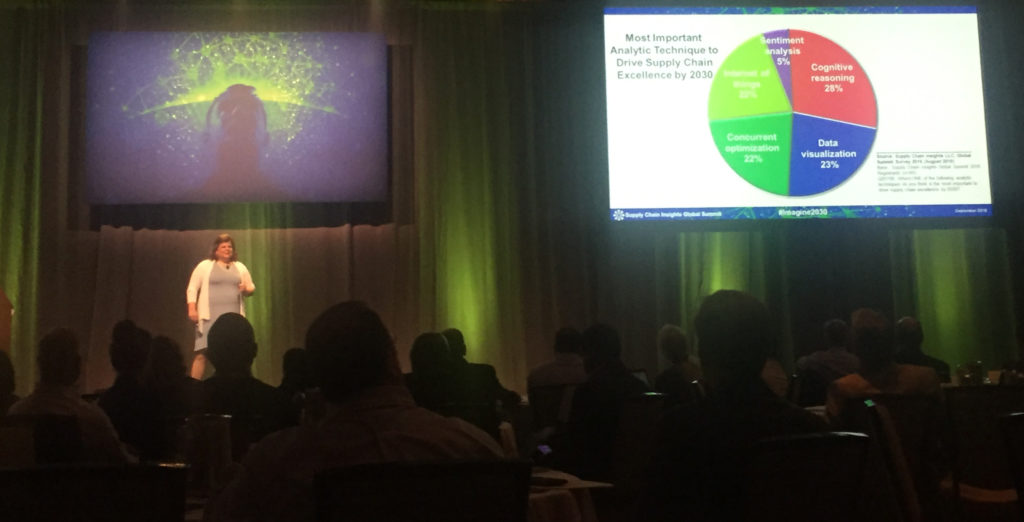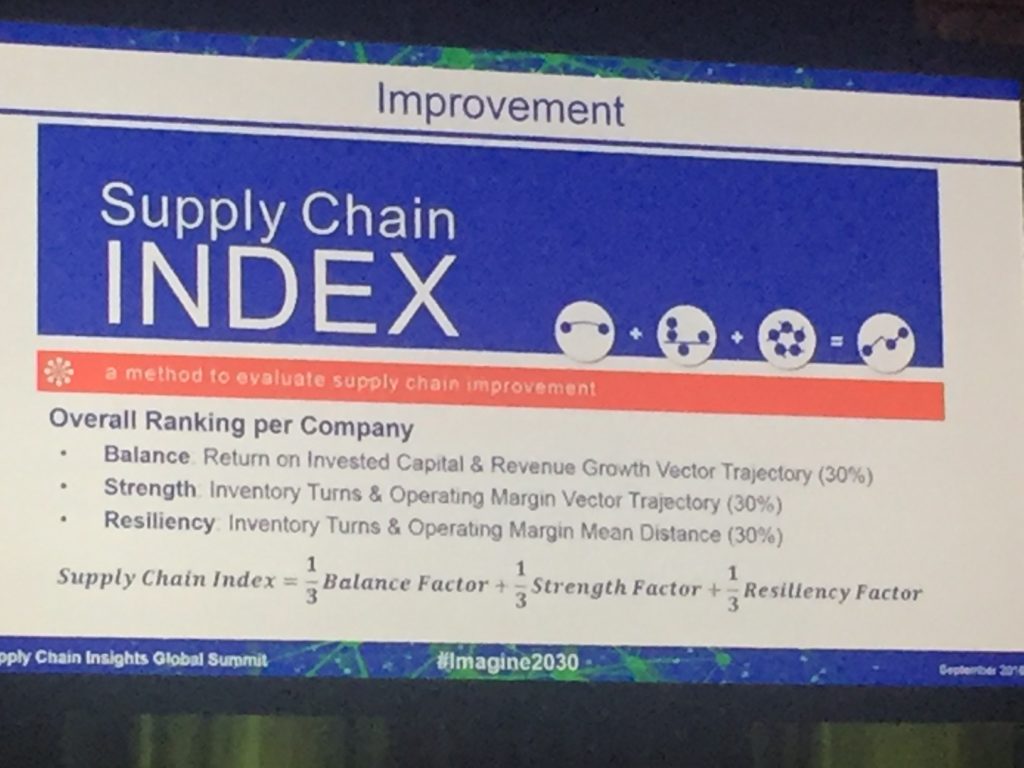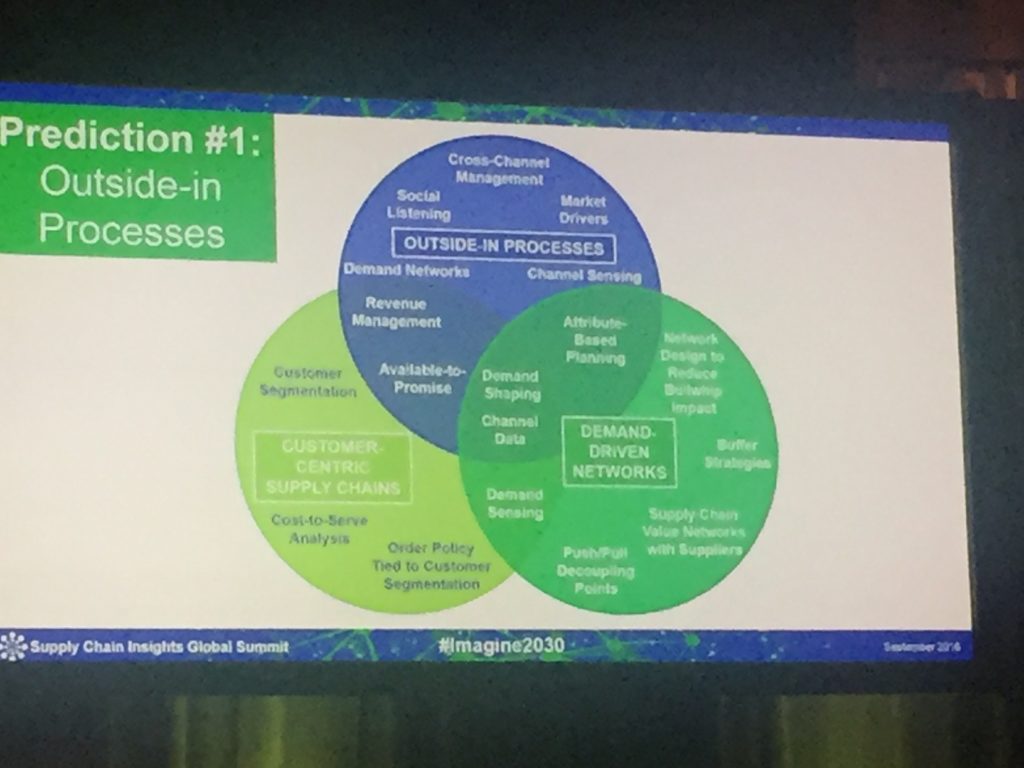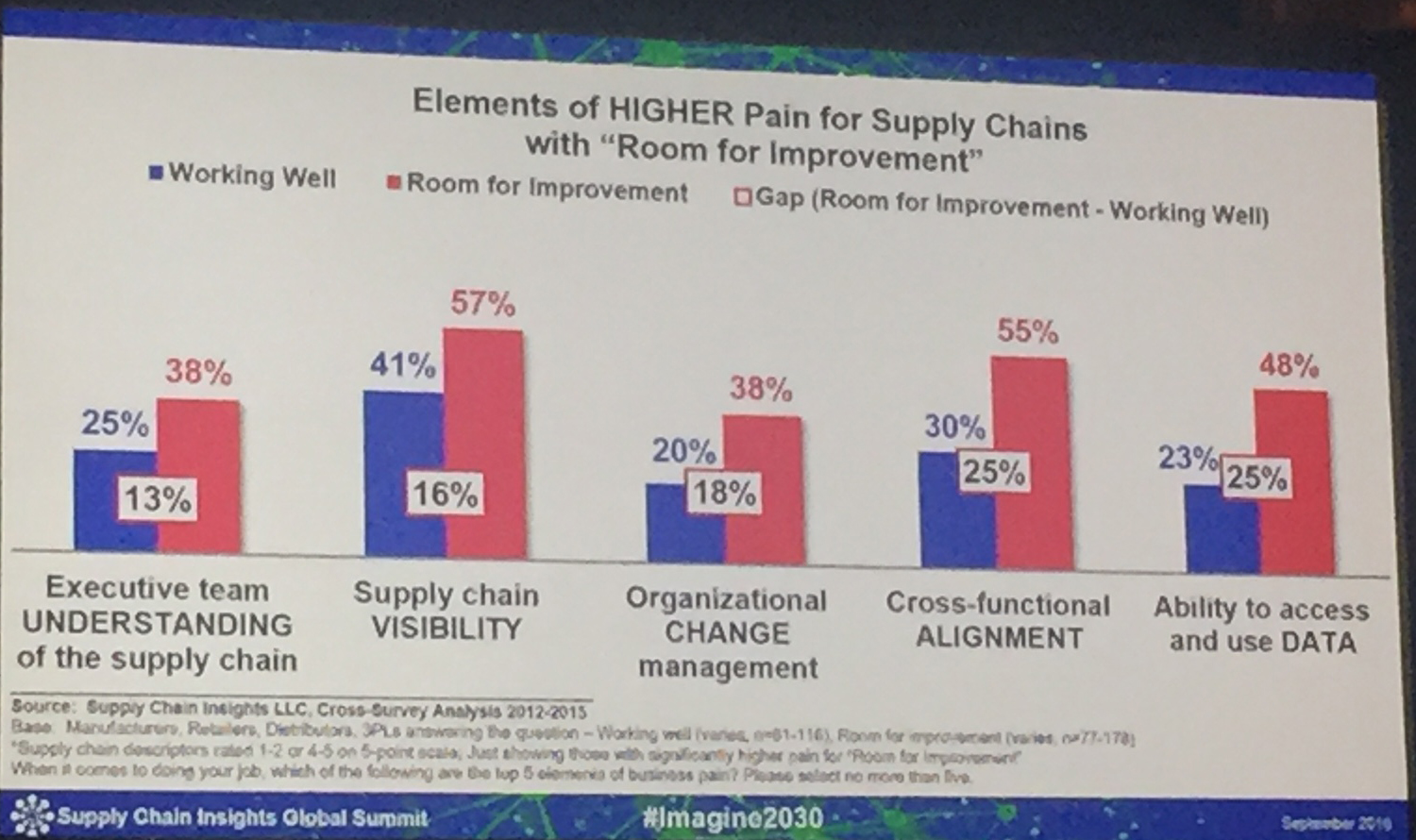“Run from what’s comfortable. Forget safety. Live where you fear to live. Destroy your reputation. Be notorious. I have tried prudent planning long enough. From now on I’ll be mad.” ~ Jalaluddin Rumi
The first day of the keynote speech at the Supply Chain Insights Global Summit from Lora Cecere – CEO and Founder Supply Chain Insights ended with the famous quote from Rumi, instigating the need for a disruption in the traditional way of thinking about supply chain processes. It was clear that the stage was set for subsequent discussions on supply chain innovation topics, the direction of the industry in the near future of 2030; and what companies today have to do to stay ahead of the curve.

Before discussing the future of supply chain, however, there was the need to look at some of the main supply chain challenges that companies are facing. Drawing from the Supply Chain Insights Cross-Survey Analysis from 2012-2013, Cecere, outlined the key supply chain challenges that companies face as:
- Ability to access and use Data
- Cross-Functional Alignment
- Organizational Change Management
- Supply Chain Visibility
- Executive team Understanding of the Supply Chain
Even in the midst of obstacles companies with exemplary supply chains set themselves apart with their supply chain processes made it to the 2016 Supply Chain to Admire award by “simply” committing to a continuous supply chain improvement process. In evaluating these winners, the Supply Chain Insights team utilized the supply chain index to evaluate supply chain improvement in these three main areas:
- Balance – Return on Invested Capital & Revenue Growth Vector Trajectory (30%)
- Strength – Inventory Turns & Operating Margin Vector Trajectory (30%)
- Resiliency – Inventory Turns & Operating Margin Mean Distance (30%)

Figure 2: Supply Chain Insights Global Summit Supply Chain Index
Companies that won the 2016 Supply Chain to Admire awards were committed to balancing all three aspects of the supply chain index. Some of the factors that throw a wrench into balancing all three factors of the supply chain include, a growth decline, increase in complexity without modifying existing processes to match changing processes and the inability to create value for an organization.
Some of the key differentiators between leading supply chain companies and laggards included a focus on horizontal processes instead of functional metrics. Building of balanced scorecards as opposed to driving singular metric strategies, creating a consistency of leadership and culture instead of chain leadership. Creating a strong planning and network design instead of focusing solely on transactional processes, and gaining clarity of supply chain excellence instead of changing focus and adapting to fads.
With that said, the future presents a wealth of opportunities that will transform supply chain as we know it to be today. The future predictions of what a supply chain in 2030 could look like included:
- Outside-In Processes: Any avid reader or follower of Lora Cecere will agree that she often makes mention to the outside-in process as the way to go for customer-centric companies looking to take advantage of predictive demand sensing and market signals. An outside-in process is a disruptive way of thinking as it challenges the business status quo, promoting change and inhibiting stagnation in innovation. See figure 3 below for a description of attributes of an outside-in process.

Figure 3: Supply Chain Insights Outside-in-Processes
- The learning Supply Chain: The second prediction and common technology trend discussed during the summit involved creating a more intuitive supply chain that relies on cognitive learning technology, helping businesses make more intelligent faster, less error prone data-driven decisions.
- The Predictive Supply Chain: In a predictive supply chain, companies will use predictive analysis to enhance decision making throughout the supply chain process.
- The Network of Networks for Business to Business (B2B): A very exciting future to look forward to in supply chain involves creating a true network of networks where B2B businesses create the connectivity to share data across businesses to improve the overall supply chain process, innovation, and efficiency.
- The Supply Chain as The Engine of Growth: Finally, in 2030, there is a hope that businesses would have reoriented their perceptions on supply chains as a business area where there needs to be a focus on cost reduction to looking at supply chains as an area of differentiation, and a growth mechanism.
In the new supply chain era where supply chains are looked at without the lenses of bottom line results, businesses might be pleasantly surprised by the business growth that can be achieved with a commitment to innovation and a focus on creating value for customers.







